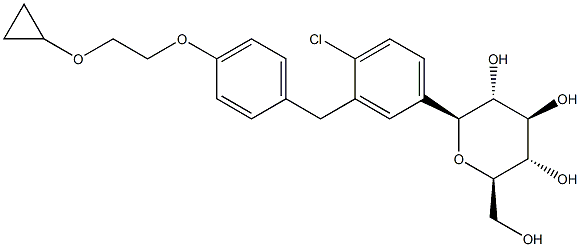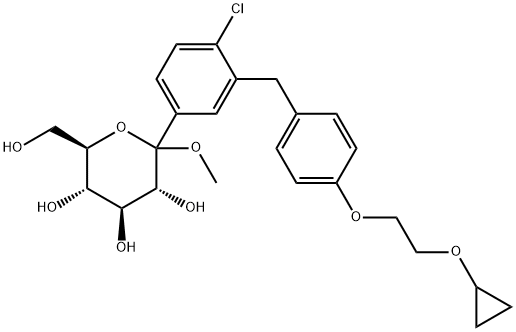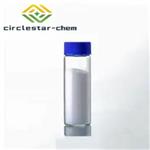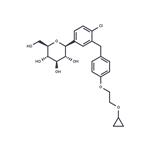Description
EGT-1442 is a potent, selective sodium glucose co-transporter 2 (SGLT2) inhibitor with IC
50 values of 5.6 μM and 2 nM for human SGLT1 and SGLT2, respectively. It produces a stable urinary excretion of glucose in rats and dogs with ED
50 values of 0.38 and 0.09 mg/kg, respectively, and reduces HbA(1c) and blood glucose in
db/db mice in a concentration dependent manner.
Uses
Bexagliflozin, also known as EGT1442, is a potent and selective SGLT2 inhibitor, attenuates blood glucose and HbA(1c) levels in db/db mice and prolongs the survival of stroke-prone rats. EGT1442 showed favorable properties both in vitro and in vivo and could be beneficial to the management of type 2 diabetic patients.
Definition
ChEBI: Bexagliflozin is a C-glycosyl comprising of beta-D-glucose in which the anomeric hydroxy group is replaced by a 4-chloro-3-({4-[2-(cyclopropyloxy)ethoxy]phenyl}methyl)phenyl group. It is a sodium-glucose co-transporter 2 (SGLT2) inhibitor indicated as an adjunct to diet and exercise to improve glycemic control in adults with type 2 diabetes mellitus. It has a role as a sodium-glucose transport protein subtype 2 inhibitor, a hypoglycemic agent and an antihypertensive agent. It is a C-glycosyl compound, an aromatic ether, a member of monochlorobenzenes, a diether and a member of cyclopropanes.
Mechanism of action
Bexagliflozin is a highly selective inhibitor of sodium-glucose cotransporter protein 2 (SGLT2), which cotransports sodium and glucose from the filtrate to the epithelium of the proximal renal tubule, thereby lowering the tubular glucose reabsorption threshold, reducing renal glucose reabsorption, and increasing urinary glucose excretion without affecting insulin levels.





